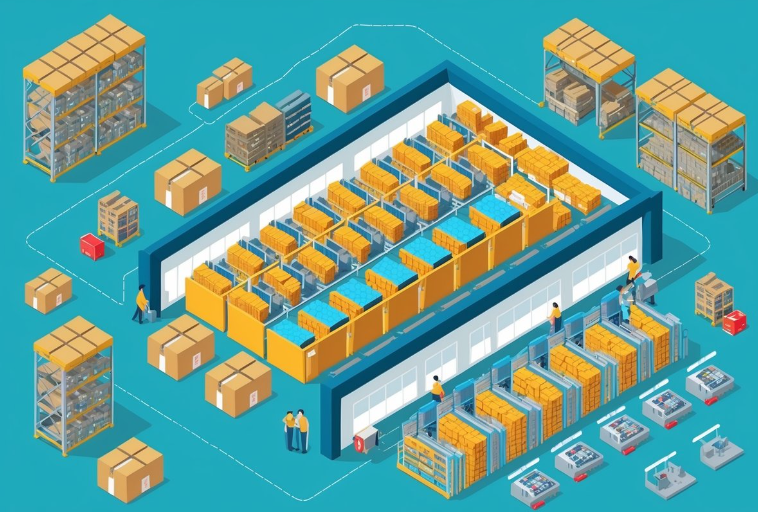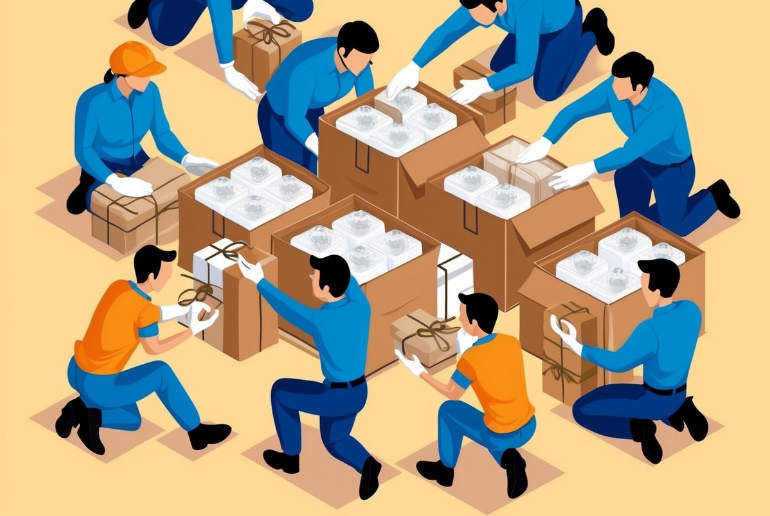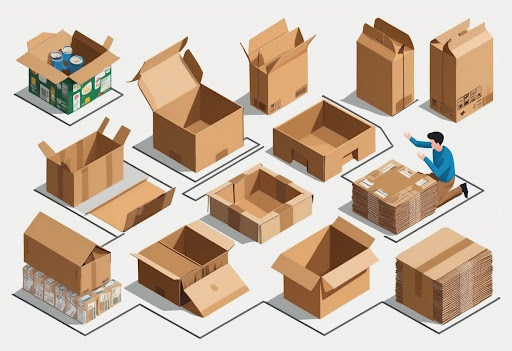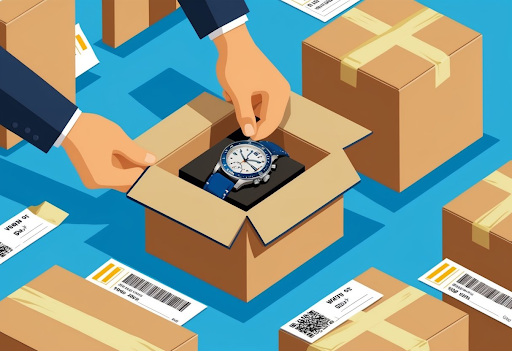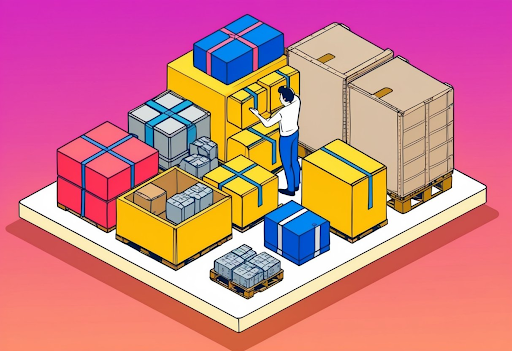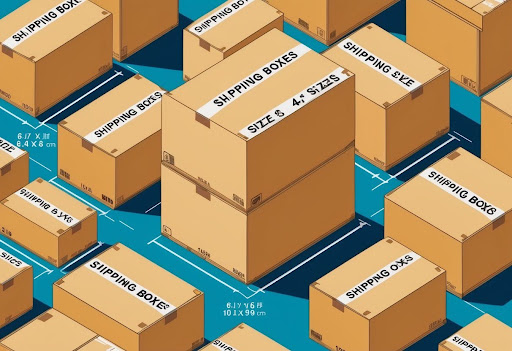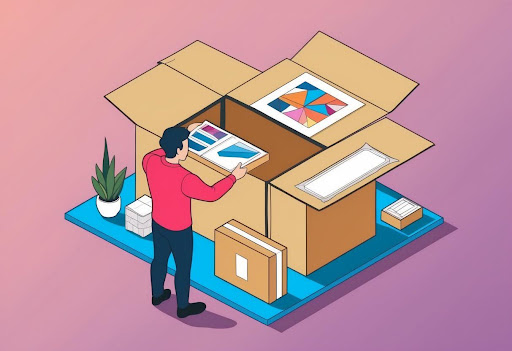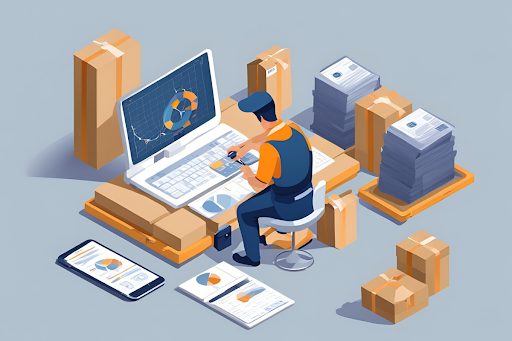A Complete Guide to Streamline Your Shipping Operations
Shipping operations that run smoothly can be the difference between growth and stagnation for your e-commerce business. When your products move efficiently from shelf to doorstep, you build customer loyalty that drives repeat business. However, when delays, errors, and miscommunications occur, even loyal customers begin looking elsewhere.
At Innovative Warehouse Solutions, we help small to mid-sized brands overcome logistics challenges with a personalized approach that larger 3PLs simply can’t match. Our transparent pricing and real-time support allow you to focus on creating more orders—we’ll handle getting them to your customers.
Understanding Shipping Operations
Efficient logistics form the backbone of successful e-commerce businesses. Let’s explore what this entails and why it matters so much for your bottom line.
Definition of Shipping Operations
Shipping operations include all activities related to preparing and delivering products from your business to customers. This process ranges from order processing and inventory management to packaging, labeling, carrier selection, and delivery tracking.
For e-commerce businesses, particularly those in health and beauty, consumer goods, and beverage industries, shipping operations typically include:
- Small parcel shipping: Individual packages sent directly to consumers
- Freight shipping: Larger shipments sent between businesses or from manufacturers to retailers
These processes require close coordination between your shipping department, warehouse staff, and external partners to ensure products reach customers accurately and on time.
Importance of Shipping Operations in E-commerce
The quality of your delivery processes directly affects customer satisfaction and retention. In today’s market where consumers expect both speed and accuracy, your shipping experience often determines whether a customer returns.
Research shows that 84% of shoppers won’t return to a brand after a poor delivery experience. Moreover, well-managed shipping processes contribute to:
- Lower operating costs
- Better inventory control
- Higher customer satisfaction ratings
- Increased repeat purchases
- Improved reviews and referrals
When your shipping runs smoothly, you create the kind of reliability that builds lasting customer relationships.
Key Components of Shipping Operations
A well-functioning shipping system consists of several interconnected stages that work together to ensure accurate, timely delivery:
- Order Receiving: The process begins when a customer orders, triggering payment verification and order record creation.
- Order Processing: Your team validates order details, checks inventory availability, and prepares documentation.
- Fulfillment: Products are picked from warehouse shelves, inspected for quality, and packaged appropriately.
- Shipping: Packages are labeled, carrier services are selected, and parcels are dispatched for delivery.
- Tracking and Communication: Updates about package status and estimated delivery times are shared with customers.
When these elements are properly integrated, they create a seamless flow that meets customer expectations while minimizing your operational burden.
Key Responsibilities in Shipping Operations
Understanding the core responsibilities in shipping operations helps businesses make informed decisions about internal management versus partnering with a specialized 3PL. These critical functions include:
- Stakeholder Coordination: Building relationships with carriers, warehouses, customs officials, and supply chain partners to ensure seamless operations.
- Voyage Management: Planning optimal routes, monitoring shipment progress, and making real-time adjustments when disruptions occur.
- Financial Supervision: Manage all cost aspects, including carrier rates, fuel surcharges, customs duties, and insurance, with complete billing clarity.
- Cargo Handling: Ensuring proper preparation, packaging, labeling, and loading of merchandise to prevent damage and maintain compliance.
- Documentation Management: Preparing and processing customs declarations, bills of lading, commercial invoices, and other required paperwork.
- Port Activities: Coordinating loading and unloading schedules and navigating complex customs procedures at various ports.
- Post-Shipment Support: Providing real-time assistance after shipping arrangements are made, including order tracking and issue resolution.
For businesses in health and beauty, beverage, and consumer goods, dedicating internal resources to manage these complex responsibilities often pulls focus from product development, marketing, and sales. This operational burden becomes incredibly challenging for companies with 2-10 employees aiming to scale beyond $1M in annual revenue.
Strategies for Optimizing Shipping Operations
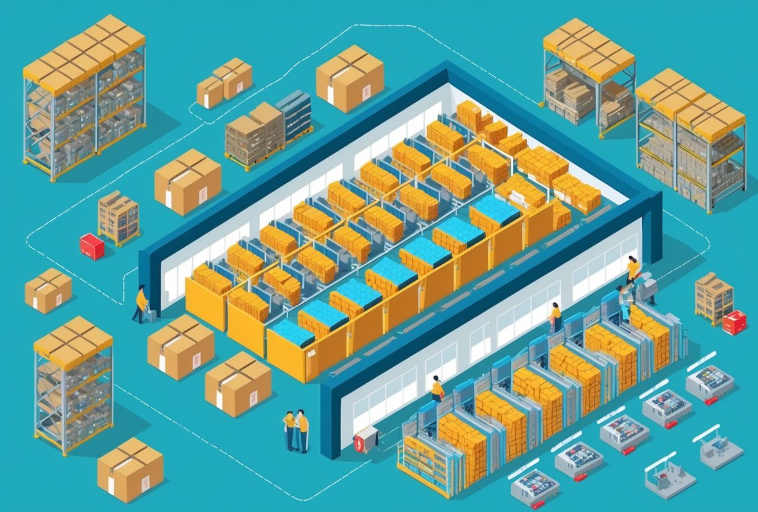
Now that we understand the fundamentals let’s explore practical strategies to enhance efficiency and customer satisfaction.
Utilizing Automation
Automation improves shipping operations by reducing manual workload, minimizing errors, and increasing processing speed.
Key automation opportunities include:
- Order Management Systems: Process orders from multiple sales channels automatically, reducing data entry errors.
- Pick-to-Light Systems: Guide warehouse staff to correct inventory locations, improving picking accuracy by up to 99.9%.
- Barcode Scanning: Verify products against orders with simple scans, reducing shipment errors.
- Automated Packaging Solutions: Determine optimal package sizes and materials, reducing waste and shipping costs.
Even basic automation can significantly improve warehouse-to-warehouse delivery efficiency. Our software solutions integrate these tools into your existing operations with minimal disruption, allowing you to maintain focus on your core business.
Implementing a Warehouse Management System
A Warehouse Management System (WMS) serves as the central command center for your shipping operations, coordinating inventory, personnel, and equipment to maximize efficiency.
An effective WMS offers:
- Real-time Inventory Visibility: Know precisely what’s in stock and where it’s at all times.
- Labor Management: Track productivity and identify opportunities for training and improvement.
- Reporting and Analytics: Generate insights into shipping performance, bottlenecks, and cost drivers.
- Integration Capabilities: Connect with your e-commerce platform, accounting software, and shipping carriers.
For luxury brands and retailers of high-value products, white glove fulfillment features can be integrated into your WMS to ensure premium items receive the specialized handling they deserve, enhancing customer satisfaction and reducing damage claims. Our integrations work with popular e-commerce platforms, making implementation straightforward for businesses with limited IT resources.
Partnering with Reliable Shipping Carriers
The carriers you select directly impact delivery times, shipping costs, and customer satisfaction. Strategic carrier partnerships can help your delivery warehouse operations become a competitive advantage rather than a liability.
When evaluating potential carrier partners, consider:
- Service Coverage: Ensure carriers deliver consistent service to all your customer locations.
- Delivery Speed Options: Different shipping speeds to meet customer expectations and price points.
- Tracking Capabilities: Select carriers with comprehensive tracking systems that integrate with your order management platform.
- Reliability Metrics: Research on-time delivery percentages and package handling quality.
- Pricing Structure: Look beyond base rates to understand accessorial charges, fuel surcharges, and volume discounts.
Many successful e-commerce businesses in health and beauty, beverage, and consumer goods industries use a multi-carrier strategy, selecting different services based on package characteristics, destination, and delivery timeline requirements. This approach provides flexibility while keeping costs manageable.
Strategic Inventory Distribution
Distributing inventory across multiple locations can dramatically reduce shipping times and costs, especially as your business grows beyond 300 monthly orders.
Benefits of strategic inventory distribution include:
- Reduced Shipping Distances: Position products closer to customer concentrations.
- Lower Shipping Costs: Shorter distances mean lower carrier fees.
- Faster Delivery Times: Meet customer expectations for quick delivery without premium shipping rates.
- Risk Mitigation: Reduce vulnerability to regional disruptions or facility issues.
To implement effective inventory distribution:
- Analyze customer location data to identify regional demand patterns
- Consider seasonal variations in purchasing behavior
- Balance inventory holding costs against shipping savings
- Establish transparent processes for inventory transfers between locations
For businesses not ready to manage multiple facilities, partnering with a customer-focused 3PL like Innovative Warehouse Solutions offers access to distributed warehouse networks without capital investment and operational complexity.
Practical Tips for Reducing Shipping Costs
Even small optimizations in your shipping operations can yield significant cost savings without sacrificing the quality that builds customer loyalty:
- Package Optimization: Right-size packaging to reduce dimensional weight charges and materials costs.
- Rate Shopping: Compare carrier rates for each shipment to find the most cost-effective option.
- Consolidation: Combine multiple orders going to nearby locations when possible.
- Negotiate Volume Discounts: Use your shipping volume to secure better rates from carriers.
- Small Parcel Management Strategies: can significantly reduce costs when implemented systematically across your shipping operations.
- Address Verification: Implement systems to correct address errors before shipment, avoiding costly rerouting.
- Prepaid Return Labels: Include return labels with outbound shipments to secure lower return shipping rates.
While controlling costs is important, balance savings against service quality. The most affordable shipping option isn’t always the best for your brand reputation and customer satisfaction. At IWS, we help you make these decisions with complete billing transparency—no hidden fees or unexpected charges.
Shipping Operations FAQs
What is the role of a shipping operations specialist?
A shipping operations specialist manages logistics, coordinates shipments, ensures regulatory compliance, and optimizes supply chain efficiency. They oversee scheduling, documentation, and carrier communication to ensure timely and cost-effective deliveries.
What are the operational risks of shipping?
Operational risks in shipping include delays, cargo damage, theft, regulatory violations, and environmental hazards. Other risks include labor disputes, equipment failures, and cybersecurity threats affecting logistics and tracking systems.
What is the shipping process?
The shipping process involves order processing, packaging, labeling, documentation, carrier selection, transit, customs clearance, and final delivery. Each step ensures accurate, efficient, and secure transportation of goods.
What are the responsibilities of shipping and receiving?
Shipping and receiving personnel manage incoming and outgoing shipments, inspect goods for accuracy and damage, handle inventory updates, and coordinate with carriers to ensure timely deliveries.
What is a shipping operation executive?
A shipping operation executive oversees transportation logistics, negotiates freight rates, manages vendor relationships, and ensures compliance with shipping regulations. They focus on optimizing costs and improving supply chain efficiency.
Conclusion
Effective shipping operations represent a critical competitive advantage in today’s e-commerce landscape. By implementing the strategies outlined above, businesses can create shipping experiences that delight customers while maintaining healthy margins.
Remember that optimizing shipping operations is an ongoing process that requires consistent attention and refinement. As your order volume grows, the complexity of your shipping operations will increase—often at a faster rate than your team can manage while still focusing on product development, marketing, and sales.
For health and beauty, beverage, and consumer goods brands looking to improve their shipping operations without managing the complexity internally, consider how a partnership with IWS can help. Our real-time, personalized customer support stands out in an industry known for impersonal service, ensuring your questions are answered promptly and your customers receive exceptional delivery experiences.
Learn how our fulfillment services can help you focus on growing your business while we handle the operational challenges of getting your products to customers quickly and accurately. Contact us today for a consultation about your specific shipping needs.
The Art of White-Glove Fulfillment: Premium Solutions for High-Value Products
White-glove service represents the pinnacle of customer care in the fulfillment industry. When businesses ship valuable, fragile, or luxury items, standard shipping methods often fall short of customer expectations. Today’s consumers demand more than just delivery—they expect an experience that matches the premium nature of their purchase. This guide explains how white-glove fulfillment provides exceptional care and attention, transforming ordinary deliveries into memorable customer experiences.
For brands looking to create lasting impressions and build customer loyalty, understanding the nuances of white-glove fulfillment isn’t just helpful—it’s essential. From careful packaging to meticulous installation, these premium services protect your products while reinforcing your brand’s commitment to excellence.
Understanding White-Glove Fulfillment
What is White-Glove Fulfillment?
White-glove fulfillment refers to a premium delivery service that goes beyond standard shipping practices. The term “white glove” originated from the pristine white gloves worn by handlers to ensure items remained untouched by bare hands, preventing fingerprints or damage—a practice still symbolizing exceptional care and attention to detail today.
While small parcel fulfillment provides efficient solutions for standard e-commerce orders, white-glove services offer an elevated approach for luxury items and high-value products that require special handling beyond what traditional shipping provides.
This premium service includes comprehensive handling from warehouse to final destination. While standard delivery typically ends at the doorstep, white-glove services extend to room-specific placement, assembly, installation, and removal of all packaging materials. For high-value items like artwork, antiques, or sophisticated electronics, this level of care protects both the product and the customer’s experience.
White-glove services often include:
- Pre-delivery inspection and quality assurance
- Custom protective packaging
- Scheduled delivery with specific time windows
- Room-of-choice placement
- Professional assembly and installation
- Removal and recycling of all packaging materials
- Basic product demonstration when applicable
Benefits of White-Glove Services
Implementing white-glove fulfillment offers substantial advantages for both businesses and their customers. For businesses, these services significantly reduce damage claims and returns, protecting profit margins while creating positive customer interactions that build loyalty and encourage repeat purchases.
Businesses looking to streamline your shipping operations can integrate white-glove services as a premium tier within their existing fulfillment strategy, creating a comprehensive approach that addresses diverse product handling requirements across their inventory.
For customers, the benefits are equally compelling. They receive a stress-free delivery experience without the worry of heavy lifting, complex assembly, or disposal of bulky packaging materials. This convenience factor alone often justifies the premium price for many consumers, especially for large or technically complex items.
The enhanced experience also strengthens brand perception. When customers receive white-glove treatment, they associate that level of care with your brand as a whole. This perception extends beyond the delivery moment, influencing how they view your products, customer service, and overall value proposition.
Industries That Benefit from White-Glove Services
Several industries particularly benefit from white-glove fulfillment, including those central to Innovative Warehouse Solutions’ client base:
- Health and beauty companies: Premium skincare, cosmetics, and wellness products that require temperature control and careful handling to maintain product integrity
- Lightweight consumer goods retailers: High-end products where presentation and unboxing experience are key components of brand value
- Specialty beverage providers: Craft drinks, premium wines, and limited-edition releases that need controlled environments and careful handling
- Luxury goods retailers: High-end furniture, designer items, and premium home décor
- Electronics providers: Large televisions, home theater systems, and complex smart home setups
Small to mid-sized brands with 2-10 employees often find white-glove fulfillment particularly valuable, as it allows them to provide premium delivery experiences without maintaining in-house logistics teams. These businesses can focus on product development and marketing while trusting their crucial last-mile experience to specialists.
Modern retailers implementing omni channel fulfilment strategies find white-glove services particularly valuable for their premium product lines, creating consistency between the high-touch in-store experience and direct-to-consumer deliveries that maintain brand standards across all customer touchpoints.
Implementing White-Glove Fulfillment
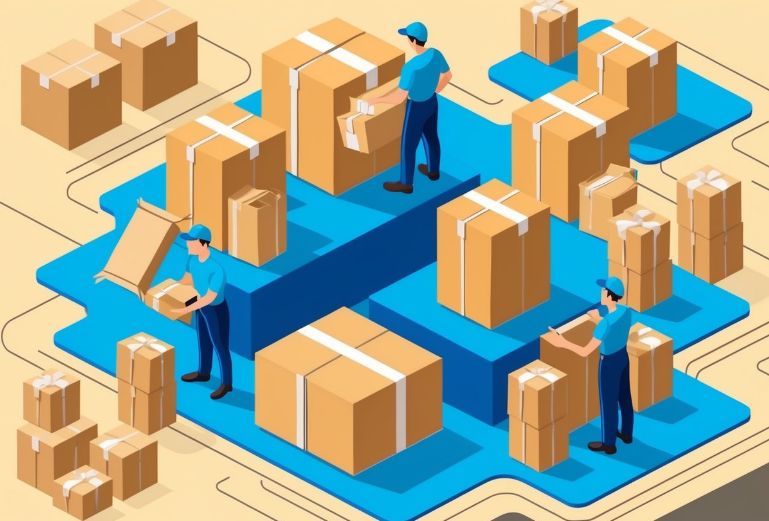
The White-Glove Delivery Process
A transparent white-glove fulfillment process involves several carefully coordinated steps:
- Pre-delivery inspection: Each item undergoes thorough quality checks before leaving the warehouse to ensure perfect condition.
- Custom packaging: Products receive specialized packaging based on their specific requirements, often including custom foam inserts, corner protectors, and moisture barriers.
- Transportation planning: Carriers plan optimal routes with climate-controlled vehicles when necessary and use specialized equipment for safe loading and unloading.
- Customer communication: Service providers coordinate with customers to schedule convenient delivery windows, often with much narrower timeframes than standard shipping.
- Professional delivery: Trained teams—typically consisting of at least two people—handle the final delivery, wearing actual white gloves when appropriate for the product.
- Room-of-choice placement: Items are carefully placed exactly where customers want them, including navigating stairs, tight doorways, or other obstacles.
- Assembly and installation: When required, delivery teams assemble furniture, mount electronics, or install appliances according to manufacturer specifications.
- Packaging removal: All packaging materials are completely removed from the premises and properly recycled or disposed of.
- Final inspection: Delivery teams conduct a final quality check with the customer present to verify complete satisfaction.
- Basic product demonstration: For technical products, a brief overview of basic functions ensures customers can begin using their purchase immediately.
Understanding White-Glove Service Costs
White-glove fulfillment represents a premium service category with pricing that reflects its specialized nature. For businesses considering this option, understanding the factors that influence costs helps create transparent expectations and accurate budgeting.
Several key variables determine white-glove service pricing:
- Product type and size: Heavier, larger, or more fragile items typically command higher fees due to specialized handling requirements. A delicate crystal chandelier will cost more to deliver than a standard coffee table, even if they have similar dimensions.
- Delivery location: Significant pricing differences exist between urban and rural locations. Urban deliveries may include challenges like limited parking and apartment access, while rural locations might involve longer travel times and fewer nearby delivery teams.
- Accessibility factors: Buildings without elevators, narrow doorways, multiple flights of stairs, or other accessibility challenges typically incur additional fees as they require more time and labor.
- Distance from distribution centers: White-glove providers calculate costs based partly on the distance from their warehouse network to the final destination. Businesses with strategic warehouse placement can reduce these costs significantly.
- Additional services: Services beyond basic delivery and placement—such as assembly, installation, old item disposal, or product demonstrations—add incremental costs to the base white-glove service.
- Seasonality and demand: During peak periods like holiday seasons, white-glove services often command premium rates due to higher demand and limited availability of skilled delivery teams.
- Local regulations: Some municipalities have specific requirements for delivery vehicles, parking, or delivery hours that can impact costs in those regions.
While standard small parcel shipping might cost $10-50 depending on weight and distance, white-glove services typically start at $150-200 for basic services and can range to $500+ for complex deliveries with multiple additional services. However, these costs should be viewed in context of the value they provide—reduced damage claims, higher customer satisfaction, and enhanced brand perception.
For growing brands, working with a 3PL like Innovative Warehouse Solutions offers a cost-effective path to white-glove capabilities. Our transparent pricing model eliminates hidden fees while providing access to premium delivery options that would be prohibitively expensive to develop in-house. By sharing resources across multiple clients, we make white-glove fulfillment accessible to businesses that might otherwise find such services out of reach.
Addressing White-Glove Fulfillment Challenges
While providing exceptional service, white-glove delivery presents challenges that require strategic solutions. The most significant obstacle is balancing cost with value. Premium service requires skilled personnel, specialized equipment, and more time per delivery, all increasing operational expenses.
At IWS, we address this challenge through transparent pricing and tiered service options. Clients can select specific white-glove elements most valuable to their customers and brand experience. This approach provides flexibility while maintaining clear costs without hidden fees—a core value that sets Innovative Warehouse Solutions apart from traditional 3PLs.
Geographical consistency presents another challenge. Maintaining uniform service quality across regions demands careful planning and standardized training. IWS addresses this through:
- Detailed training programs that standardize service quality
- Clear escalation procedures for unexpected situations
- Strategic partnerships with regional specialists where necessary
- Real-time, personalized customer support throughout the delivery process
Using Technology for Efficient White-Glove Services
Technology transforms white-glove fulfillment from a purely manual service into a data-driven operation. Advanced scheduling systems allow customers to select specific time slots and receive real-time updates, setting appropriate expectations while reducing costly failed delivery attempts.
Communication tools are equally important, enabling seamless coordination between warehouse staff, delivery teams, and customers. Mobile applications that allow delivery personnel to access detailed instructions, product manuals, and customer preferences ensure consistent service quality even with complex deliveries.
For small to mid-sized brands with annual revenues of $1M+, these technologies were once available only to enterprise-level companies. Now, IWS’s software solutions democratize access to these tools, allowing growing brands to compete with larger companies on customer experience while maintaining the personal touch that built their loyal customer base.
Creating Premium Customer Experiences Through White-Glove Service

The Human Element in White-Glove Delivery
The human element remains the cornerstone of true white-glove service. While technology provides the framework, it’s the personalized interactions between staff and customers that create memorable experiences. Delivery personnel serve as brand ambassadors during these crucial final touchpoints.
Training should focus on both technical skills and customer service excellence. Team members need product knowledge to handle items correctly and answer basic questions, but they also need soft skills like active listening, problem-solving, and professional communication.
Small touches like addressing customers by name, respecting home environments (using floor protection, removing shoes when appropriate), and demonstrating genuine care for customer satisfaction can transform a delivery into a brand-building experience. This customer-centric approach aligns perfectly with IWS’s core values and distinguished service model.
How IWS Delivers White-Glove Excellence
At Innovative Warehouse Solutions, white-glove service isn’t an add-on feature—it’s built into our operational DNA. Our approach includes:
- Client-specific handling protocols: We develop customized handling procedures for each client’s unique products, ensuring specialized care for everything from delicate skincare products to premium beverages.
- Transparent communication: Our real-time tracking and proactive updates keep both brands and their customers informed throughout the delivery process, eliminating the uncertainty that plagues standard shipping.
- Dedicated account representatives: Unlike impersonal global 3PLs, each IWS client works with a dedicated team that truly understands their products, brand values, and customer expectations.
- Continuous improvement: We systematically collect and analyze delivery feedback, using insights to refine our white-glove services for each client’s specific needs.
- Scalable solutions: Our white-glove services grow with your business, maintaining premium delivery experiences whether you’re shipping 300 monthly orders or experiencing rapid growth.
White-Glove Service FAQs
What is white glove customer service?
White glove customer service provides personalized, high-touch support that exceeds standard service levels. It focuses on attention to detail, proactive problem-solving, and exceptional customer care to create a premium experience.
Is white glove service worth it?
White glove service is worth it for businesses and customers seeking premium care, reduced errors, and enhanced satisfaction. It adds value by ensuring seamless experiences, reducing stress, and handling complex needs efficiently.
What is the difference between white glove and self-service?
White glove service offers hands-on, personalized assistance, while self-service relies on customers completing tasks independently using tools like FAQs, chatbots, or online portals. White glove is high-touch, whereas self-service is automated and scalable.
What is white glove onboarding?
White glove onboarding is a personalized approach to customer or employee integration, offering step-by-step guidance, dedicated support, and tailored solutions to ensure a smooth transition and long-term success.
What is an example of white glove treatment?
An example of white glove treatment is a luxury hotel offering personalized concierge services, private airport transfers, and customized room setups based on guest preferences.
Conclusion
White-glove fulfillment extends beyond luxury shipping—it’s a strategic approach that recognizes delivery as an extension of your brand promise. In today’s competitive market, where product differentiation may be minimal, exceptional service becomes a powerful way to stand out and build lasting customer relationships.
For businesses selling high-value products in health and beauty, specialty beverages, or premium consumer goods, white-glove service protects both product integrity and brand reputation. As customer expectations continue to rise, businesses that invest in premium fulfillment capabilities position themselves for long-term success.
For brands ready to improve their customer experience, Innovative Warehouse Solutions offers customized white-glove fulfillment services designed to protect your products and boost your brand reputation. Our team brings attention to detail and customer-focused care to every delivery, handling your products with the same care you put into creating them.
Small Parcel Fulfillment: Efficient 3PL Shipment Solutions
Small parcel fulfillment forms the backbone of modern e-commerce logistics, enabling businesses to deliver products directly to customers with speed and precision. For growing brands shipping lightweight consumer goods, health and beauty products, or specialty beverages, effective small parcel management can significantly impact your competitive position. Third-party logistics (3PL) providers like Innovative Warehouse Solutions offer specialized expertise that allows businesses with annual revenues of $1M+ to focus on growth while leaving complex operational details to logistics professionals.
The increasing consumer demand for faster deliveries and transparent shipping processes has made selecting the right 3PL partner more crucial than ever. With a customer-centric partner focused on transparency and accuracy, businesses can turn their shipping operations from a cost center into a competitive advantage, ultimately driving customer satisfaction and repeat business.
Key Benefits of Small Parcel Fulfillment

Cost-Effective Shipping Solutions
Small parcel fulfillment through a specialized 3PL provider offers significant cost advantages that directly impact your bottom line. By consolidating shipments from multiple clients, 3PL companies like Innovative Warehouse Solutions can negotiate better rates with major carriers than most individual businesses could achieve independently. These savings pass directly to clients, making professional fulfillment services surprisingly affordable for growing brands.
Beyond volume discounts, experienced 3PL providers optimize packaging dimensions and materials to minimize dimensional weight charges—a common source of unexpected shipping costs. By precisely matching packaging to product specifications, businesses avoid paying for excess space or materials while still ensuring products arrive safely. This optimization process typically includes:
- Custom packaging solutions tailored to specific product dimensions
- Strategic carrier selection based on destination and delivery timeline
- Consolidation of multiple items to reduce per-unit shipping costs
- Bulk rate negotiation with UPS, FedEx, USPS, and other carriers
Enhanced Delivery Speed and Reliability
In today’s market, customers expect fast, reliable deliveries. Working with a professional 3PL for small parcel fulfillment helps businesses meet these expectations consistently. Professional fulfillment centers are strategically located to minimize transit times to major population centers, allowing for faster delivery without premium shipping costs.
Advanced tracking systems provide real-time visibility throughout the shipping process, helping both businesses and their customers know exactly where packages are and when they’ll arrive. This transparency builds trust and reduces customer service inquiries about order status. Most importantly, professional fulfillment operations maintain strict quality control standards that significantly reduce shipping errors, ensuring customers receive exactly what they ordered, properly packaged, on time.
Partnering with a 3PL for Small Parcel Shipping
When businesses experience growth, managing small parcel shipments in-house can quickly become overwhelming. Partnering with a 3PL provider offers a strategic solution that allows companies to scale operations without the corresponding increase in logistics complexity. This approach changes shipping from an operational challenge into a competitive advantage.
Advantages of 3PL Partnerships
Working with a specialized 3PL like Innovative Warehouse Solutions brings professional expertise to your fulfillment operations. IWS focuses on real-time, personalized customer support that stands out in an industry often criticized for impersonal service. Their experience across multiple clients and industries means they’ve likely solved the exact challenges your business faces, allowing you to benefit from proven solutions rather than learning through costly trial and error.
The scalability offered by 3PL partnerships proves invaluable for businesses with seasonal fluctuations or growth ambitions. Rather than investing in warehouse space that sits partially empty during slow periods or scrambling to expand during peak seasons, businesses can simply adjust their service level as needed. This flexibility eliminates the capital expenditure and long-term commitments associated with in-house fulfillment operations.
Cost savings extend beyond shipping rates to encompass the entire fulfillment infrastructure. Businesses avoid investments in warehouse space, fulfillment technology, training, equipment, and staffing when partnering with a 3PL. These operational savings, combined with transparent pricing with no hidden fees, often make professional fulfillment more economical than in-house solutions.
Effective Strategies for Small Parcel Shipping
Maximizing the efficiency of small parcel shipping requires thoughtful planning and implementation of proven strategies. Companies that excel in this area focus on both the physical aspects of shipping and the underlying processes that support them.
Innovative Packaging Solutions
The right packaging protects products during transit while minimizing dimensional weight costs. Professional 3PLs employ packaging specialists to design solutions that balance protection, presentation, and cost-effectiveness. These experts select materials based on product fragility, weight, and environmental conditions during shipping.
Custom packaging options allow brands to maintain their identity throughout the unboxing experience. From branded boxes and tape to custom inserts and tissue paper, these touches extend the brand experience to the moment of delivery. Smart 3PLs offer various packaging options to match different product needs:
- Standard corrugated boxes in multiple sizes
- Poly mailers for soft goods and non-fragile items
- Custom inserts to prevent movement during transit
- Specialty packaging for fragile or unusually shaped items
- Sustainable packaging options for environmentally conscious brands
Selecting the Right Shipping Carrier
Carrier selection significantly impacts delivery speed, reliability, and cost. Professional 3PLs maintain relationships with multiple carriers, allowing them to select the optimal service for each shipment based on destination, timeline, and budget constraints.
When evaluating carriers, businesses should consider factors beyond the base shipping rate. Delivery consistency, package handling quality, and available service levels all contribute to the total value proposition. A slightly higher shipping cost may be justified if it results in faster delivery, better tracking, or reduced damage claims.
The best 3PL partners offer a hybrid approach, using different carriers for different shipping scenarios to optimize the cost-service balance. This might mean using USPS for lightweight packages to residential addresses, FedEx for time-sensitive deliveries, and regional carriers for specific geographic areas where they offer superior service.
Technology Integration in Small Parcel Fulfillment
Technology serves as the foundation for efficient small parcel fulfillment in today’s logistics environment. Advanced software solutions connect all aspects of the fulfillment process, from order receipt to delivery confirmation, creating a seamless flow of information that drives operational excellence.
Real-Time Inventory Management
Accurate inventory management prevents costly stockouts and overstock situations while ensuring orders can be fulfilled promptly. Modern 3PL providers like Innovative Warehouse Solutions implement real-time inventory tracking systems that provide instant visibility into stock levels across all storage locations.
These systems automatically update as products move through the fulfillment process, providing both the 3PL and their clients with accurate, current information. This visibility enables proactive decision-making about reordering, allowing businesses to maintain optimal inventory levels without manual counting or estimation.
Automated reordering capabilities further streamline inventory management by triggering purchase orders when stock reaches predetermined thresholds. By eliminating the delay between identifying a need for replenishment and placing an order, businesses reduce the risk of stockouts while minimizing excess inventory carrying costs.
Advanced Tracking and Analytics
Data-driven fulfillment represents the cutting edge of small parcel shipping. Modern 3PLs collect and analyze data at every step of the process, using these insights to identify bottlenecks, forecast demand, and continuously refine operations.
Tracking technologies provide real-time visibility into package location and status throughout the delivery process. This information flows seamlessly to both the business and end customers, creating transparency that builds trust and reduces support inquiries about order status.
Analytics capabilities convert raw shipping data into actionable business intelligence. By examining patterns in shipping costs, transit times, damage rates, and other metrics, businesses can make informed decisions about:
- Optimal warehouse locations to minimize transit times
- Most cost-effective packaging methods for different products
- Carrier performance and selection criteria
- Peak shipping periods requiring additional resources
- Regional variations in delivery performance
The Role of Reverse Logistics in Small Parcel Fulfillment

Returns management has become a critical component of e-commerce success, with customers increasingly considering return policies before making purchase decisions. Effective reverse logistics processes turn what could be a negative customer experience into an opportunity for building loyalty.
Streamlining Returns Process
User-friendly return policies remove barriers to purchase by giving customers confidence that they can easily return items if needed. The best 3PL partners support these policies with simple, clear return processes that minimize customer effort. This might include pre-printed return labels, clear instructions, and multiple return options.
Efficient management of returned products begins with proper receiving and inspection procedures. Professional 3PLs systematically evaluate returned items to determine whether they can be restocked, need refurbishment, or should be disposed of. This triage process maximizes recovery value while ensuring that only sellable products return to inventory.
Quick resolution of returns directly impacts customer satisfaction and loyalty. By processing returns promptly and communicating clearly about refund status, businesses show respect for their customers’ time and money. The best 3PL partners prioritize returns processing alongside outbound shipments, recognizing that effective returns management drives repeat business.
Enhancing Customer Experience
The ultimate goal of small parcel fulfillment is creating satisfied customers who return for future purchases and recommend the brand to others. Every aspect of the shipping process contributes to this experience, from order placement to delivery and potential returns.
For businesses shipping premium or high-value products, standard shipping solutions may not suffice. Many companies find that incorporating white-glove service into their fulfillment strategy significantly enhances the unboxing experience and provides additional protection for valuable merchandise. This premium approach ensures products arrive in perfect condition with exceptional presentation.
Strengthening Customer Communication
Regular updates throughout the shipping process set appropriate expectations and reduce anxiety about order status. Professional 3PLs integrate with e-commerce platforms to automatically trigger notifications at key milestones, keeping customers informed without requiring manual updates from the business.
Customer feedback provides valuable insights for refining shipping processes. By systematically collecting and analyzing customer comments about packaging, delivery times, and overall experience, businesses can identify opportunities for improvement that might otherwise go unnoticed.
Exceptional customer service for shipping-related inquiries completes the experience. When questions or problems arise, prompt, helpful responses demonstrate the business’s commitment to customer satisfaction. IWS offers dedicated customer service resources that understand the business’s products and policies, allowing them to resolve issues quickly and accurately – a key differentiator in an industry often criticized for impersonal service.
Small Parcel Fulfillment FAQs
What is classed as a small parcel?
A small parcel is a packaged shipment typically under 70 lbs and within carrier size limits, such as those set by USPS, UPS, or FedEx. It is handled individually rather than on pallets.
What is the difference between small parcel and LTL?
Small parcel shipping handles individual packages, while LTL (Less-Than-Truckload) shipping consolidates multiple shipments on a single truck. Small parcels are ideal for lightweight, single-box deliveries, whereas LTL is used for larger, palletized freight.
What is another name for a small parcel?
Another name for a small parcel is a package, box shipment, or courier package. In logistics, it may also be referred to as a parcel shipment.
What does parcel process by fulfillment mean?
“Parcel processed by fulfillment” means the order has been picked, packed, and labeled for shipping by a fulfillment center or warehouse, preparing it for carrier pickup.
What is a fulfillment fee?
A fulfillment fee is the charge for storing, picking, packing, and shipping an order through a third-party logistics provider (3PL) or fulfillment center. It covers handling and distribution costs.
Conclusion
Efficient small parcel fulfillment through partnership with a specialized 3PL provider offers businesses a powerful competitive advantage in today’s market. By working with experts who prioritize transparency, real-time customer support, and accurate order fulfillment, companies can deliver products faster, more reliably, and more cost-effectively than handling fulfillment in-house.
For growing brands focused on creating exceptional products and building customer relationships, outsourcing fulfillment to experts like Innovative Warehouse Solutions allows them to concentrate on their core competencies. This approach is particularly valuable for businesses in the health and beauty, lightweight consumer goods, and beverage industries, where order accuracy and presentation are crucial. As e-commerce continues to expand and customer expectations rise, this strategic approach to small parcel fulfillment will only become more valuable.
Types of Cardboard Material: A Guide to Cardboard Packaging and Uses
Poor packaging choices cost businesses thousands in damaged products and unhappy customers. Many companies struggle to select the right cardboard materials, leading to increased returns and wasted resources. But there’s good news – understanding cardboard packaging types helps cut costs while keeping products safe during shipping. This guide breaks down essential cardboard materials to help your business make smarter packaging decisions.
Understanding the Types of Cardboard Material
Selecting the right cardboard type affects both product safety and operational costs. Here’s what you need to know about the main cardboard materials for your packaging needs.
When shipping specific products, packaging requirements become even more crucial. For example, understanding shipping cosmetics requires special attention to material selection and protection methods. Similarly, businesses need to consider regulations like what states can liquor be shipped to in the US when selecting packaging for beverage products.
Corrugated Fiberboard
Corrugated fiberboard combines a fluted layer between liner boards, creating strong yet lightweight protection. Single-wall corrugated offers reliable protection for standard shipping needs, while double-wall and triple-wall options provide extra durability for heavier items.
Paperboard (Chipboard)
At 0.3 to 0.4 millimeters thick, paperboard provides sturdy protection for lightweight items. Its smooth surface allows for high-quality printing, making it ideal for retail-ready packaging and display units.
Material Construction and Strength
Understanding cardboard construction helps businesses balance cost with protection needs. Let’s explore the key factors that affect packaging performance.
Kraft Paper and Virgin Fibers
The quality of raw materials directly impacts cardboard performance. Virgin wood fibers create stronger, more resilient cardboard compared to recycled materials. Businesses often combine virgin fiber packaging for primary protection with recycled materials for secondary packaging to optimize both performance and sustainability.
Adhesives and Heat-Pressure Treatment
The strength of cardboard packaging relies heavily on layer bonding. Starch-based adhesives create reliable bonds while maintaining recyclability – an important consideration for businesses prioritizing sustainable practices.
Weights and Thicknesses
Cardboard thickness impacts both shipping costs and product protection. Understanding dimweight helps businesses optimize their packaging choices for maximum cost-effectiveness. Regular testing of different thicknesses helps businesses find the optimal balance between protection and shipping expenses.
Cardboard Recycling and Sustainability
Smart recycling practices help businesses reduce waste management costs while supporting environmental goals. Understanding proper recycling procedures ensures maximum value from packaging materials.
Recycling Process
Effective cardboard recycling starts with proper sorting. Establishing dedicated areas for clean cardboard collection increases recycling success rates and reduces contamination. Working with fulfillment centers that manage recycling programs can significantly reduce waste expenses.
Challenges in Recycling
Common issues affecting recyclability include food residue and wax coatings. Following proper storage and handling procedures helps maintain cardboard recyclability. Specialized recycling programs exist for materials with wax coatings or other treatments.
Applications and Uses of Cardboard
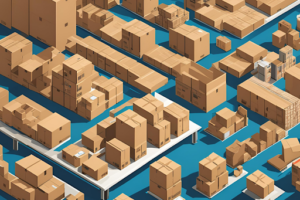
The packaging industry relies on strategic cardboard selection to protect products throughout the shipping journey. Different materials serve specific needs, from basic shipping protection to premium retail presentation. Understanding these applications helps businesses select materials that align with both their protection requirements and budget constraints.
Corrugated Cardboard and Flute Types
Corrugated cardboard’s strength comes from its fluted layer design, with each profile offering distinct advantages. A-flute construction provides robust protection through its thick profile, making it suitable for delicate items requiring maximum safeguarding. B-flute reduces thickness while maintaining strength, offering excellent printing surfaces for retail packaging. C-flute strikes a balance between protection and cost-efficiency, serving as a reliable choice for standard shipping needs.
The smaller E and F-flute profiles add versatility to packaging options. These thinner profiles maintain impressive strength while allowing for premium finishing and superior printability. This combination proves particularly valuable for retail-ready packaging where presentation matters as much as protection.
Innovations in Sustainable Solutions
The packaging industry continues advancing sustainable options without compromising protection. These developments focus on reducing material usage while maintaining strength. New manufacturing techniques create stronger bonds between layers, allowing for thinner profiles that perform as well as their thicker predecessors.
Understanding Paperboard
Paperboard serves distinct packaging needs through its versatile nature. Solid Bleached Board delivers a pristine surface ideal for high-end packaging, while Solid Unbleached Board resists moisture effectively. These characteristics make paperboard an excellent choice when presentation quality counts as much as protection.
The material’s adaptability shines in retail environments where packages must protect products while catching customer attention. Its smooth surface takes printing well, allowing for crisp graphics that enhance shelf appeal. This combination of functionality and aesthetics makes paperboard particularly valuable for businesses focused on retail presence.
Making Smart Packaging Decisions
Selecting the right cardboard material impacts every aspect of your business operations. The choice affects not just product protection, but also storage efficiency, shipping costs, and customer satisfaction. While the options may seem complex, working with the right fulfillment partner simplifies these decisions.
Why Partner with IWS
At IWS, we take a different approach to fulfillment. Our real-time support team works alongside you to select packaging that protects your products and your profits. We believe in clear communication and honest pricing – you’ll always know exactly what you’re paying for and why.
When you work with IWS, you receive:
- Professional guidance based on proven experience
- Clear, upfront pricing with no hidden charges
- Dedicated support from an expert team
- Regular optimization of your packaging strategy
Types of Cardboard Materials FAQs
What is GSM cardboard?
GSM cardboard refers to cardboard graded by its weight in grams per square meter (GSM). Higher GSM values indicate thicker, heavier, and more durable cardboard. It is commonly used in packaging, where strength and durability are important for protecting contents.
What are the raw materials in cardboard?
The raw materials in cardboard include wood pulp, recycled paper, and chemical additives. Wood pulp provides strength, while recycled fibers improve sustainability. Additives enhance properties like water resistance and durability, making cardboard versatile for packaging and industrial use.
What are the grades of cardboard?
Cardboard grades include single-wall, double-wall, and triple-wall corrugated types. They vary by thickness and strength. Specialty grades, like Kraft or coated cardboard, add durability or moisture resistance, while solid fiberboard offers high density for heavy-duty applications.
What is the strongest type of cardboard?
The strongest type of cardboard is triple-wall corrugated cardboard. It consists of three layers of fluting and four linerboards, offering superior strength and durability. This type is used for heavy-duty applications like industrial packaging and shipping.
How to tell if cardboard is corrugated?
To tell if cardboard is corrugated, look for a fluted (wavy) layer sandwiched between two flat linerboards. Check the edge of the material for this distinctive structure, which adds strength and durability. Corrugated cardboard feels stiffer and more robust than flat cardboard.
Take the Next Step
Ready to improve your packaging efficiency? Our team at IWS is ready to help you select the right materials for your specific needs. Contact us through www.invwhs.com/contact-us for a consultation. We’ll analyze your requirements and create a solution that helps your business grow.
How to Ship Cosmetics Safely: A Guide to Packaging and Shipping Makeup and Nail Polish
Beauty companies struggle with damaged products, temperature-sensitive items losing their integrity, and complicated shipping regulations. These issues impact your bottom line and customer satisfaction. When products arrive broken or compromised, it’s frustrating for you and your customer.
But there’s a way forward. Here’s how to safely ship makeup, nail polish, and other beauty products, meet regulations, and exceed customer expectations.
Packaging for Cosmetics
Good packaging creates a protective barrier for your beauty products in transit. High-quality, double-walled boxes specifically designed for cosmetic shipping are the foundation for safe delivery.
Selecting the right types of cardboard material is crucial for cosmetic shipping – while single-wall boxes might work for lightweight items, premium beauty products require stronger materials for protection. High-quality, double-walled boxes specifically designed for cosmetic shipping provide the foundation for safe delivery.
Glass bottles and makeup palettes need to be cushioned strategically to prevent breakage. For liquid products, tested leak-proof bags with waterproof tape seals prevent spills.
Temperature control affects product integrity. Specialized thermal materials and insulated liners protect temperature-sensitive items like liquid foundations or cream-based products. Strategic cushioning keeps products secure throughout shipping.
Before selecting packaging, review standard shipping box sizes in cm to determine the most cost-effective options for your product line. High-quality, double-walled boxes specifically designed for cosmetic shipping provide the foundation for safe delivery. Glass bottles and makeup palettes need to be cushioned strategically to prevent breakage.
Best Practices for Shipping Makeup and Nail Polish
Right-sized packaging is key to minimizing product movement in transit which not only keeps the product intact but also keeps shipping costs under control.
For products like nail polish and other regulated items, you need to use precise labeling that meets the shipping carrier’s and regulatory agencies’ requirements. This includes the contents, safety warnings, and handling instructions.
Also, high-quality packing tape ensures packages are sealed tight and not accidentally opened or damaged. And providing clear handling instructions on the package and in the shipping documentation helps with a smoother delivery and ensures everyone involved knows how to handle the product.
Insurance and Cost Management

Smart Protection
Beauty companies shipping high-end products need protection against loss. Standard carrier coverage is fine for basic orders; premium collections need extra insurance. Clear guidance helps you choose the right coverage for your products and distribution.
Cost Effective
Finding the right balance between product protection and cost is key. Understanding dims and weights helps you select packaging that prevents excess dimensional charges while keeping products safe. Investing in the right protective materials saves you long-term costs by preventing damage and returns.
International Shipping Requirements
Regulations and Documentation
International beauty product shipping has specific requirements depending on the country. Each destination has different documentation needs and ingredient restrictions especially for products like nail polish. International shipping requires:
- Full ingredient documentation
- Safety data sheets for regulated items
- Proper hazardous materials declarations
- Country specific labeling
Working with a 3PL Partner
Growth Management
Understanding health and beauty logistics helps companies plan for growth and maintain quality control. When you partner with a 3PL that specializes in beauty products, you get expertise in the unique storage, handling, and shipping requirements that keep your products in perfect condition.
As beauty companies grow, shipping gets more complicated. Growth depends on:
- Delivery speed: The right warehouse location cuts shipping times to major markets. When you add new sales channels, strategic facility locations get products to customers faster and cheaper.
- Storage requirements: Cosmetics need temperature and humidity control. Our climate-controlled facilities ensure product quality for natural skincare lines and sensitive formulations.
- Regulatory standards: Beauty products need specific labels and paperwork for shipping. Our system tracks all documentation, from safety data sheets for alcohol-based products to proper declarations for pressurized products.
- Order accuracy: Our system tracks batch numbers and expiration dates. This ensures product quality control and helps brands maintain their reputation through accurate fulfillment.
Customer Focus
Beauty consumers expect great service and on-time delivery. The right warehouse location reduces delivery times and gets customers happy and repeat business. Ongoing shipment visibility and consistent communication build trust with your customer base.
Carrier and Requirements
Different carriers have different advantages for shipping cosmetics. Cost-effective solutions for basic makeup and specialized solutions for regulated items like nail polish. Knowing carrier-specific protocols prevents delays and supports on-time delivery.
Shipping Cosmetics FAQs
How do I sell my beauty products to customers?
Sell beauty products to customers by identifying your target audience, creating a brand presence, and utilizing multiple sales channels such as e-commerce platforms, social media, and retail outlets. Offer promotions, engage with customers online, and provide product education to build trust and drive sales.
Can you sell cosmetics online?
You can sell cosmetics online by creating an e-commerce website, using platforms like Shopify or Amazon, and promoting products on social media. Ensure compliance with regulations, provide ingredient transparency, and invest in digital marketing to reach a wider audience effectively.
What liquids cannot be shipped?
Liquids that cannot be shipped include flammable substances (e.g., gasoline, alcohol over 70%), corrosive materials (e.g., acids), and certain perishable items. Shipping restrictions vary by carrier, so check guidelines to ensure compliance with regulations for safe transportation.
Summary
While global 3PLs offer generic solutions, Innovative Warehouse Solutions (IWS) is different, with personalized service and real-time support that bigger companies can’t match. Our dedicated team gives you direct access to fulfillment experts who know your business and get back to you fast – no phone trees or auto responses.
What makes IWS different:
- Real-time, personalized customer service from the same team that knows your business
- Clear pricing with no hidden fees or surprises
- Proven track record of managing high-value cosmetics with 100% accuracy
- Dedicated account reps that monitor your shipments
- Strategic warehouse locations that save you money and time
Ready to experience service that puts you first? Contact IWS today to learn how our customer-centric approach can support your growth while keeping your products safe.
Best Way to Ship a Watch: Tips for Safe and Secure Delivery
Every day, countless valuable timepieces are damaged in transit due to improper packaging and handling. A single scratch can slash a luxury watch’s value by thousands of dollars, while improper cushioning can lead to devastating internal damage. But shipping your precious timepieces doesn’t have to be a nerve-wracking experience.
At Innovative Warehouse Solutions, we’ve developed comprehensive shipping protocols that ensure your watches arrive in perfect condition, backed by advanced tracking technology and responsive support every step of the way.
Why Proper Watch Shipping Matters
A luxury watch represents both a significant investment and often an irreplaceable item with personal significance. Temperature fluctuations, impacts, or mishandling can damage sensitive watch mechanisms, leading to expensive repairs or total losses.
Our proven protocols and network of trusted carriers provide complete transparency in handling procedures, with dedicated support ready to address any concerns immediately.
Preparing a Watch for Shipping
Begin with a thorough cleaning using a soft, lint-free cloth. Document the watch’s condition with high-resolution photos from multiple angles for insurance purposes and shipping records.
Next, remove all detachable parts, including straps and bracelets. Pack each component individually with appropriate cushioning materials to ensure maximum protection during transit.
Professional Presentation
Creating a Premium Unboxing Experience
The presentation of a watch delivery sets the tone for recipient satisfaction. A professionally packaged timepiece demonstrates attention to detail and care for the item’s value. Begin with a pristine outer shipping container that opens to reveal carefully organized contents.
Essential Presentation Elements
Start with the watch’s original box when available, as it adds authenticity and value to the presentation. Select a premium watch box for timepieces without original packaging that offers proper protection while maintaining an upscale appearance. Include all relevant documentation, such as authenticity cards or service records, in a sealed envelope placed securely within the packaging.
Attention to Detail
Position the watch on its display cushion with the dial facing up for immediate visual impact upon opening. Ensure any removable elements are properly secured but easily accessible. The presentation should balance security with aesthetics – each component visible and organized while remaining fully protected during transit.
Choosing the Right Packaging Materials
Selecting a Sturdy Box
Choose a new, rigid box with at least two inches of clearance on all sides. Understanding typical box dimensions can help you select the right size for your watch shipment. Double-walled corrugated cardboard boxes rated for heavy-duty shipping provide optimal protection against impacts and crushing forces during transit.
Adding Cushioning Layers
Create protective layers around your watch using high-quality bubble wrap and precision-cut foam inserts. This multi-layer approach ensures the watch remains firmly in place throughout shipping while guarding against both impact and vibration damage. Many of these protective techniques are similar to those used when shipping artwork, as both require exceptional care in handling delicate items.
Shipping Services and Insurance
Selecting a Reliable Shipping Service
Choose carriers based on their track record with high-value items. Premium shipping services should include signature requirements and detailed tracking capabilities. Understanding weights and dims helps optimize shipping costs while ensuring adequate protection for your timepiece. Premium shipping services should include signature requirements and detailed tracking capabilities.
IWS provides comprehensive tracking through our real-time platform, allowing immediate response to any potential issues.
Insuring Your Shipment
Full insurance coverage is essential for valuable watches. We assist clients in securing appropriate coverage through vetted providers, with transparent documentation of all terms and no hidden fees.
Opting for Signature Confirmation
Adult signature confirmation provides an essential security measure for high-value watch shipments. Our tracking system provides instant notifications of delivery confirmation and recipient details through our client portal.
Tips for International Watch Shipping
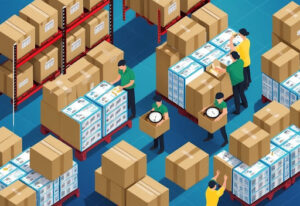
Understanding Customs Regulations
International watch shipping requires detailed knowledge of import regulations across different markets. Our compliance team manages all customs documentation, providing direct support throughout the cross-border shipping process.
Avoiding Additional Delays
Clear, accurate documentation is crucial for efficient customs processing. Our multilingual shipping team prepares all required paperwork, including certificates and appraisals, ensuring smooth international transit.
Currency and Insurance for Global Shipping
International shipments require specialized coverage. We handle all currency conversions and documentation in both origin and destination currencies, maintaining complete transparency throughout the process.
What to Do if Something Goes Wrong
Filing a Claim
Our support team provides rapid response to any shipping concerns, with comprehensive documentation and direct carrier communication. You’ll have access to complete digital records of your shipment’s journey, including condition photos and handling data.
Resolving Carrier Disputes
Our dedicated claims team manages all carrier communication, backed by detailed shipment records, to ensure swift resolution of any issues.
Best Way to Ship a Watch FAQs
How much to ship a Rolex?
The cost to ship a Rolex depends on the destination, shipping method, and insurance value. Insured shipping via services like FedEx or UPS for high-value items can range from $50 to $200. Always ensure the full value is declared and covered by insurance.
How to bubble wrap a watch?
To bubble wrap a watch, first wrap the watch in a soft microfiber cloth to prevent scratches. Then, wrap it securely in several layers of bubble wrap, focusing on the face and clasp. Seal with tape and place in a sturdy box to prevent movement during transit.
How do you pack a watch in a box?
Pack a watch in a box by wrapping it in a microfiber cloth and bubble wrap for protection. Place the wrapped watch in a snug-fitting box with cushioning material, like foam or packing peanuts, to prevent movement. Seal the box securely for shipping or storage.
Are watch boxes worth it?
Watch boxes are worth it for protecting and organizing watches. They prevent scratches, keep watches dust-free, and offer a safe storage solution. High-quality watch boxes also enhance the display and preserve the value of luxury timepieces.
Can I send a watch in the mail?
You can send a watch in the mail by securely packaging it in a padded box and using a reliable courier service. Opt for insured shipping to cover the watch’s value and use tracking for added security during transit.
Conclusion
When shipping valuable timepieces, expertise, and attention to detail make all the difference. IWS stands apart through our:
- 24/7 dedicated support team with response times under 15 minutes
- Complete transparency in pricing with no hidden fees
- Real-time tracking and instant notifications
- Comprehensive insurance coverage with simplified claims process
- Specialized packaging protocols for maximum protection
Ready to ship your valuable timepieces with confidence? Contact our team to learn how our specialized shipping solutions can safeguard your watches with professional care and real-time support.
Dimweight Simplified: How to Use Weights and Dims to Improve Shipping Costs
Are unexpected shipping costs eating into your profit margins? Many businesses find themselves paying significantly more for shipping than they should simply because they don’t understand dimensional weight pricing. For health and beauty brands, beverage companies, and consumer goods businesses, these excess costs add up quickly – turning profitable sales into break-even transactions or even losses.
The complexity of dimensional weight calculations makes the problem worse. Without clear guidance, businesses often make costly packaging decisions that inflate their shipping expenses day after day. Each oversized box or inefficient packaging choice creates a steady drain on resources that could be invested in growth instead.
Ready to stop overpaying for shipping? Let’s explore how understanding dimensional weight can help you protect both your products and your profits.
What is Dimweight and Why It Matters?
Shipping carriers determine costs using dimensional weight – a pricing method based on how much space packages occupy in their vehicles. Rather than calculating costs solely on physical weight, carriers consider both the size and weight of packages to establish their rates. This calculation method presents important cost management opportunities for brands in the health, beauty, and consumer goods sectors.
Understanding dimensional weight directly affects your operational costs. When businesses refine their packaging strategies based on dimensional weight principles, they often see meaningful reductions in shipping expenses. This knowledge becomes particularly valuable for companies shipping products that have a small physical weight but require protective packaging.
How to Calculate Dimweight
Carriers use a standard method to determine dimensional weight: they multiply the package’s length, width, and height in inches, then divide by their specific divisor. This calculation helps determine your actual shipping costs.
For example, when a carrier uses a 139 divisor for a package, you multiply its three dimensions and then divide by 139 to find the dimensional weight. Your final shipping charge will be based on either this dimensional weight or the actual weight – whichever is greater.
Why Carriers Use Dimweight
Transportation companies value both their cargo space and weight capacity when moving packages. Small, lightweight items in large boxes take up vehicle space that could hold multiple compact packages. The dimensional weight pricing structure ensures carriers receive fair compensation for the space each shipment occupies in their vehicles.
This pricing approach particularly affects businesses in the health and beauty sector, where products often need protective packaging that increases their dimensional footprint.
For instance, understanding how to ship makeup requires special consideration of both product safety and dimensional weight, as cosmetics need secure packaging that can impact shipping costs. Understanding these considerations allows businesses to make informed decisions about their packaging and shipping strategies.
The Impact of Dimweight on Shipping Costs
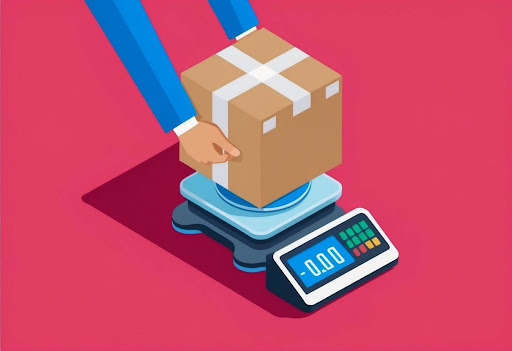
The financial implications of dimensional weight pricing become clear when analyzing shipping expenses. When businesses ship lightweight products in oversized boxes, they often pay for dimensional weight that far exceeds their products’ actual weight. This difference creates opportunities for cost reduction through strategic packaging choices.
Smart packaging decisions can lead to significant savings in shipping costs. By focusing on package dimensions and making calculated adjustments, businesses can reduce their dimensional weight charges while maintaining product protection. These improvements in shipping efficiency help support healthy profit margins and sustainable growth.
Packaging Optimization Strategies for Reducing Dimweight Costs
Success in controlling dimensional weight costs starts with making informed packaging choices. Maintaining an appropriate selection of box sizes for different product combinations helps prevent unnecessary dimensional weight charges. This approach allows businesses to select the most cost-effective packaging for each shipment.
Protection materials also play a vital role in managing both weights and dimensions. Companies can benefit from exploring innovative protective materials that offer excellent product safety while minimizing package dimensions. These materials often provide better protection than traditional options while reducing shipping costs.
Choosing the Right Carrier and Understanding Their Policies
Each carrier has its own approach to dimensional weight calculations, making carrier selection a vital business decision. FedEx and UPS generally use a 139 divisor for domestic shipments, while regional carriers might offer different terms based on shipping zones. A thorough analysis of carrier options helps identify the most cost-effective solutions for your needs.
Multiple factors influence total shipping costs: base rates, dimensional divisors, service levels, and volume discounts all play essential roles. Understanding how these elements work together helps businesses select optimal shipping solutions for their product mix and customer locations.
Common Mistakes When Managing Dimensional Weight
Measurement accuracy stands out as a critical factor in managing shipping costs effectively. Small errors in package measurements can result in significant unexpected charges. Taking precise measurements, including all external packaging elements, makes a substantial difference in shipping expense management.
Consistent training proves essential for effective cost control. Clear procedures for package measurements and material selection help teams make decisions that positively impact shipping expenses. Creating standard operating procedures for packaging helps maintain consistency and cost efficiency across operations.
Making Informed Decisions with the Right Tools
Successful e-commerce brands rely on accurate calculations to optimize their shipping decisions. Using integrated dimweight calculators provides instant comparisons between actual weight and dimensional weight charges. These tools support better decision-making for packaging selection and carrier choice.
Dimweight FAQs
What is the difference between weight and dimensional weight?
The main difference between weight and dimensional weight is their basis for calculation. Weight refers to the actual mass of a package measured on a scale, while dimensional weight considers the package’s volume based on dimensions, using a specific divisor to calculate space usage for shipping efficiency.
Is volumetric weight 5000 or 6000?
Volumetric weight divisors are commonly 5000 or 6000, depending on the courier. For international air shipments, 5000 is frequently used, while some ground or regional services apply 6000. The divisor determines the conversion of a package’s volume (in cubic centimeters) into a weight equivalent.
What happens if weight is wrong on FedEx?
If the weight is wrong on FedEx, the shipment may incur additional charges or be delayed. FedEx uses dimensional weight or actual weight, whichever is greater, and discrepancies lead to adjustments in shipping costs post-audit.
What is DIM weight 166?
DIM weight 166 refers to a dimensional weight divisor of 166 used in shipping calculations. To find the dimensional weight in pounds, divide the package volume (in cubic inches) by 166. This standard is common in domestic shipping within the United States.
Partner with IWS for Optimized Shipping Solutions
IWS brings expertise in managing shipping costs while maintaining product quality. Our team specializes in helping beauty, beverage, and consumer goods brands reduce shipping expenses through strategic solutions. We understand the specific requirements for shipping sensitive products like cosmetics and perishables.
Our transparent pricing structure sets us apart from other fulfillment providers. With real-time customer support, you’ll always have access to expert guidance. Our team analyzes your shipping data to identify opportunities for continued cost reduction and efficiency improvements.
For a detailed analysis of your shipping expenses and solutions tailored to your business needs, contact our fulfillment experts.
Standard Shipping Box Sizes in Cm: A Complete Guide to Box Dimensions
Is your business losing money on shipping costs? Many companies overspend thousands of dollars annually by using incorrect box sizes for their products. When packages arrive damaged or shipping fees unexpectedly increase, both your profits and customer relationships suffer.
At IWS, we specialize in helping businesses select optimal box dimensions through personalized support and transparent pricing. Our team analyzes your specific product requirements to recommend packaging solutions that reduce costs while ensuring safe delivery. This guide shares our expertise on choosing the right box sizes to protect your products and your bottom line.
Understanding Standard Box Sizes
Standard box dimensions form the basis of efficient shipping and storage operations. These measurements help businesses calculate volumetric weight accurately and select packaging that protects products while controlling costs. At IWS, our team works with clients individually to determine effective box sizes based on their specific product requirements.
Common Box Dimensions for Shipping
| Size Category | Length (cm) | Width (cm) | Height (cm) | Common Uses |
| Small | 20 | 15 | 10 | Health and beauty products |
| Medium | 30 | 20 | 15 | Beverage multi-packs |
| Large | 40 | 30 | 20 | Bundled consumer goods |
| Extra Large | 60 | 40 | 30 | Bulk retail orders |
Typical Box Dimensions and Their Applications
Small Box Applications
Small boxes (20 x 15 x 10 cm) suit lightweight personal care items (including shipping nail polish), small accessories, and individual product shipments. These compact dimensions help reduce shipping costs while providing sufficient protection for appropriately sized items.
Medium Box Applications
Medium boxes (30 x 20 x 15 cm) suit product bundles and multi-item orders. The balanced dimensions provide flexibility for various product combinations while maintaining cost-effective shipping rates.
Large and Extra-Large Box Solutions
Large boxes (40 x 30 x 20 cm) and extra-large options (60 x 40 x 30 cm) support substantial orders requiring additional protection. Key considerations include:
- Strategic weight distribution
- Protection for corners and edges
- Proper interior stabilization
- Structural reinforcement
Specialized Dimensions
Some products perform better with specific box configurations:
- Rigid-wall containers: 50 x 5 x 40 cm
- Product sets: 35 x 25 x 3 cm
- Multi-unit packages: 40 x 10 x 10 cm
Specialty items often require unique packaging considerations – for example, learning the best way to ship a watch can help prevent damage to valuable timepieces while optimizing box space.
Material Selection Support
Box dimensions work together with appropriate packaging materials to create effective shipping solutions. The IWS fulfillment team provides direct guidance on selecting materials that complement chosen box sizes, considering factors like:
- Product protection requirements
- Environmental conditions during transit
- Cost-effectiveness of material combinations
Box Size Selection Principles
Selecting the right box dimensions requires balancing multiple factors. The optimal choice provides adequate protection while minimizing excess space that increases shipping costs. At IWS, we analyze product specifications, shipping patterns, and carrier requirements to identify the most cost-effective packaging solutions.
Also, understanding weights and dims helps you make informed decisions about box selection, especially when shipping specialty items like cosmetics or valuable accessories.
Protection Considerations
- Product protection requirements: Different materials and void fill combinations provide varying levels of protection for fragile, heavy, or temperature-sensitive items.
- Environmental conditions during transit: Humidity, temperature changes, and handling impacts during shipping affect how your package needs to be protected.
- Strategic cushioning and stabilization: Proper spacing and support materials prevent product movement and protect vulnerable areas like corners and edges.
- Cost-effective material combinations: The right mix of outer boxes, inner packaging, and void fill maximizes protection while minimizing overall shipping costs.
- Current carrier guidelines and requirements: Carrier policies on box strength, maximum dimensions, and special handling affect both packaging choices and shipping rates.
Specialty Requirements
Different products require specific approaches to protection:
- Fragile items need strategic cushioning spaces
- Temperature-sensitive products benefit from specific dimension ratios
- Multi-item orders require calculated interior organization
Standard Shipping Box Sizes in CM FAQs
How do you measure a box for shipping?
Measure a box for shipping by determining its length, width, and height. Use a tape measure to find the longest side (length), the shorter side (width), and the vertical side (height). Always measure in inches or centimeters for accuracy.
What does L * W * H mean?
L * W * H stands for Length × Width × Height. It represents the three dimensions of a box used to calculate volume, dimensional weight, and shipping costs.
What are the 3 measurements of a box?
The three measurements of a box are length, width, and height. Length is the longest side, width is the shorter side, and height is the vertical dimension.
How is box size calculated?
Box size is calculated by multiplying its length, width, and height (L × W × H). For shipping, dimensional weight may be used by dividing volume by a carrier’s dimensional factor.
How do I calculate my parcel size?
Calculate parcel size by measuring its length, width, and height in inches or centimeters. Multiply these values (L × W × H) to determine volume. Some carriers use dimensional weight formulas to calculate shipping costs.
Conclusion
Selecting the right shipping box dimensions creates a foundation for efficient operations and cost control. IWS stands apart by providing dedicated support throughout your growth journey, combining shipping expertise with transparent pricing. Our team helps you optimize box selection while delivering the personalized attention you need to succeed.
Ready to optimize your shipping operations with a partner focused on your success? Connect with our team to discuss your specific requirements and learn how we can help streamline your fulfillment process.
Shipping Artwork Like a Pro: Choosing the Best Artwork, Shipping Boxes, and Methods
Your business’s visual assets represent significant investments in your brand. Yet, statistics show that 80% of artwork shipping damage stems from improper packing methods, leading to costly delays and replacements. The good news? You can prevent these issues with proper shipping techniques. Our guide shows you proven methods to protect your valuable pieces during transit based on years of successful shipping experience.
Understanding the Basics of Shipping Artwork
Why Safe Shipping Matters
Quality handling protects your brand’s visual elements and marketing materials during transit. Proper shipping methods reduce costs by preventing damage and maintaining consistent timelines. When you protect your visual assets effectively, you can maintain focus on your core business growth.
Key Shipping Considerations
Transportation presents unique challenges for visual materials. Temperature variations can affect materials, while standard handling methods often prove insufficient. Successful shipping requires specific expertise and materials designed for visual asset protection. Professional shipping partners who understand these requirements help maintain your marketing timeline and brand presentation.
Choosing the Right Packaging Materials
Essential Materials for Art Transport
Professional art shipping requires specific materials suited to the task. Key components include:
- Acid-free tissue paper or glassine for surface protection
- Bubble wrap for shock absorption
- Corner protectors for framed pieces
- Double-walled corrugated boxes sized to match your items
Benefits of Specialized Boxes
Standard shipping containers don’t provide adequate protection for visual assets. Professional art shipping boxes offer reinforced corners and stronger walls. While these materials cost more initially, they provide superior protection and prevent costly damage during transit.
Packing Procedures for Safe Shipping
A systematic packing approach starts with careful inspection and preparation of your workspace. Begin by examining the artwork for any existing condition issues that need documentation. Set up a clean, flat surface with all necessary materials within reach.
Flat Artwork Protection
Start with a layer of archival tissue to create a protective barrier against moisture. Position cardboard panels on both sides, ensuring they extend one inch beyond artwork edges. Layer shock-absorbing materials in alternating directions to create balanced protection.
Rolled Art Techniques
Select a mailing tube with a diameter three times larger than the rolled artwork thickness. Line the tube interior with a moisture barrier before inserting the rolled piece. Secure end caps with heavy-duty tape and add internal buffers to prevent sliding.
Frame Protection Methods
Custom-cut corner protectors should extend three inches along each frame edge for optimal support. Apply clear protective film across glass surfaces to contain fragments if breakage occurs. Create a double-box system with shock-absorbing material between the layers.
Final Securing Steps
Seal all package seams with reinforced shipping tape in continuous strips to prevent moisture. Add handling instruction labels on all sides of the outer container. Test the packed container by holding it at different angles to check for movement.
Reducing Common Risks

Successful art shipping begins with choosing the proper packaging. Strong, new boxes sized for your items ensure safe transit. Many businesses reuse boxes to save costs, which can cause serious issues. Used boxes often have hidden structural weaknesses, from weakened corners collapsing under pressure to compromised seams splitting during handling.
Protection layers require careful application. A common mistake is letting bubble wrap touch artwork, damaging finishes, and leaving residue. Start with glassine or acid-free paper against the artwork, then use bubble wrap for protection. Seal all seams with strong, shipping-rated tape in continuous strips.
Internal space management is crucial for protecting shipped items. When materials shift during transit, damage ensues. Effective management involves filling gaps with crushed paper or foam inserts and maintaining protective zones around frames and corners. For larger pieces, internal supports prevent movement and protect against impact. Gently shake packed boxes to test for movement issues before shipping.
Technical Packing Specifications
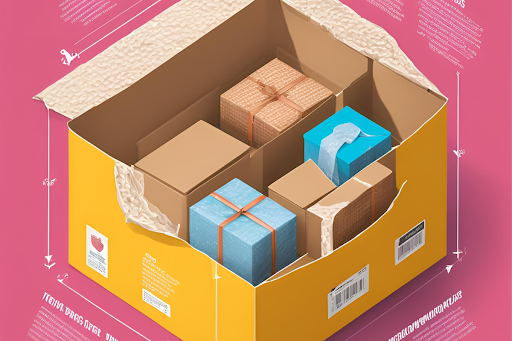
A dedicated packing area serves as the foundation for quality shipping preparation. Set up your workspace at waist height with adequate lighting for detailed inspections. Having materials within reach and space to move around packages improves efficiency while reducing handling risks. For delicate items like timepieces, learning how to ship a watch can provide valuable insights into protecting small, high-value items during transit.
Material Selection Guidelines
Professional packing requires specific materials rated for artwork protection. Archival tape provides safe adhesion for delicate surfaces, while acid-free clear wrap offers temporary protection. Custom-cut padding must extend beyond artwork dimensions to create proper buffer zones. When selecting shock absorbers, match the material density to your item’s weight and fragility rating.
Container Sizing Mathematics
Precise measurements determine proper container selection beyond basic size matching. Calculate inner box dimensions by adding double padding thickness plus one inch to artwork measurements. Outer boxes need similar calculations accounting for cushioning layers. For tubes, select a diameter three times the rolled artwork thickness.
Advanced Protection Techniques
Technical expertise in material application significantly improves shipping outcomes. Apply protective coatings a full day before packing to prevent moisture issues. Position supporting panels to counter natural material stress points. Alternate the direction of cushioning layers to create a more stable protection network.
Working with Shipping Partners
Professional shipping partners who understand art handling make a significant difference in delivery success. Carriers like FedEx and UPS offer specialized business programs designed for valuable items, providing enhanced handling care and detailed tracking. These services prove particularly valuable when coordinating deliveries across multiple locations or meeting specific timeline requirements.
Your shipping budget needs careful consideration of several key factors. Understanding the cost of shipping items helps you plan effectively, while mastering weights and dims can significantly reduce expenses. Package dimensions, distance to destination, and required delivery speed also affect final costs.
Most carriers now use dimensional pricing – charging based on either size or weight, depending on which costs more. By planning shipments in advance and understanding these pricing factors, you can secure better rates while maintaining your delivery timelines.
Protection and Claims
Shipping insurance requires careful thought, as basic carrier coverage often falls short for valuable items. Most services limit liability below the actual cost. Specialized art insurers offer better protection for investments. Detailed documentation, including pre-shipping photos and condition descriptions, supports claims.
Timely examination and documentation of packages upon arrival create a solid basis for claims, including taking explicit photos of packaging and contents. Quick communication with carriers can expedite resolutions, and retaining all packaging materials and shipping documents protects your interests during the claims process.
Business Shipping Strategy
Your shipping approach should align with your specific business requirements. While some materials move well through standard services, valuable pieces need specialized handling expertise. Professional delivery services can manage the entire process from packing through installation. Timing considerations often influence shipping choices, with expedited options available for time-sensitive deliveries.
Understanding weights and dims helps control shipping expenses. Large pieces often cost more to ship than smaller, heavier items because carriers base charges on truck space usage. Strategic packaging choices help reduce these costs while maintaining protection standards. Working closely with shipping partners helps you understand size limits and avoid unexpected fees for oversized items.
Shipping Artwork FAQs
How much does it cost to ship artwork?
The cost to ship artwork depends on size, weight, shipping distance, and packaging. Small pieces may cost $10–$50, while larger framed artwork can exceed $200, especially with insurance and expedited services. International shipping and custom crates add to the expense.
Can I bring a painting on a plane?
You can bring a painting on a plane as carry-on or checked luggage, depending on its size. Paintings must comply with airline size restrictions and be securely wrapped. Use a protective cover or flat packaging, and inform security about delicate contents during screening.
How do I protect my artwork from being copied?
Protect artwork from being copied by registering it with copyright law, watermarking digital images, and limiting online resolution. Include clear copyright notices on your work, and consider using legal agreements or licensing when sharing or selling your art.
How to pack drawings for shipping?
Pack drawings for shipping by placing them in acid-free sleeves or wrapping them in protective paper. Use sturdy cardboard or foam board for support, and place the package in a rigid mailing tube or flat box. Seal securely to prevent bending or moisture damage.
How do I sell and ship art prints?
Sell and ship art prints by listing them on platforms like Etsy or your website. Use archival-quality packaging, such as tubes or rigid mailers, to protect prints. Include a Certificate of Authenticity for added value, and choose a reliable shipping service with tracking.
Conclusion
Protecting your valuable materials during shipping directly impacts your business success. At Innovative Warehouse Solutions, we offer the expertise needed to safeguard your shipments. Our commitment to real-time, personalized support sets us apart in the industry. While other providers offer complex pricing structures, we maintain complete transparency in our rates and services.
Our team provides dedicated support throughout the shipping process, ensuring you always know the status of your valuable items. We build lasting partnerships with our clients through clear communication and reliable service. When you need a shipping partner who truly understands the importance of your materials, IWS delivers the support and solutions you need.
Ready to experience shipping done right? Contact our team to discuss your needs and learn how our solutions can support your business growth.
How to Calculate Shipping Cost Per Item: A Step-by-Step Guide to Estimating Freight Costs
Inaccurate shipping calculations drain profits and create budget uncertainty that can stall your business growth. Many companies struggle with complex formulas and hidden fees that make it impossible to predict true shipping costs. What if you could get exact shipping calculations to make confident decisions about your fulfillment operations?
At IWS, we specialize in helping health, beauty, and consumer goods brands optimize their shipping costs through clear, accurate calculations. Let’s explore methods to determine your exact shipping costs – with our commitment to transparency and no hidden fees.
How to Calculate Shipping Costs Per Item
For growing brands in the health and beauty industry, understanding freight cost per item helps plan fulfillment budgets with confidence. Our experience managing high-volume shipments shows that clear cost breakdowns lead to better business decisions.
Here’s our straightforward calculation method:
Total Cost Per Item = (Total Shipping Cost + Packaging Materials + Insurance + Handling Fees) ÷ Number of Items
To support your calculations, we recommend:
- Direct carrier calculators from UPS, FedEx, and USPS
- Rate comparison tools that show all fees upfront
- Real-time shipping cost monitoring systems
Factors That Affect Shipping Costs
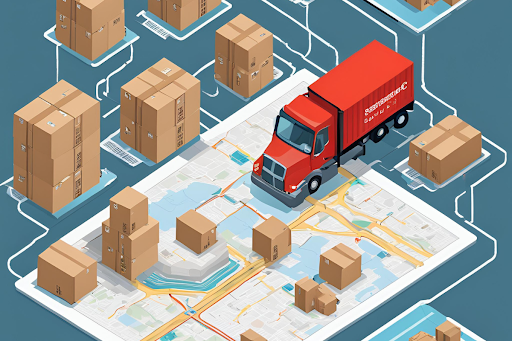
Package weight and dimensions are the primary factors carriers consider when determining shipping costs. Understanding dimweight is crucial for accurate cost estimation. For health and beauty products, even small variations matter. Understanding weight thresholds helps avoid unexpected charges.
Dimension calculations follow a simple formula: length × width × height ÷ 139 for domestic shipments. Carriers use this dimensional weight when it exceeds actual weight. Smart packaging choices can help minimize these costs while ensuring product safety.
Methods for Allocating Shipping Costs
For beauty and wellness brands shipping multiple products, choosing a clear cost allocation method ensures accurate pricing and helps maintain healthy profit margins. Based on our experience working with successful brands, here are proven approaches:
Weight-based allocation works well for mixed product shipments. This provides clear, fair cost distribution when shipping products of varying weights.
Value-based allocation makes sense when shipping products of different prices, especially when insurance matters. This approach helps protect your margins while keeping shipping costs fair for customers.
Different products require different shipping approaches. For example, artwork shippers need specialized packaging and handling methods, while companies wondering what states can liquor be shipped to in the US must navigate complex regulations. Our expertise extends across various shipping scenarios, helping businesses implement the most cost-effective allocation methods for their specific needs.
Impact of Shipping Costs on Pricing
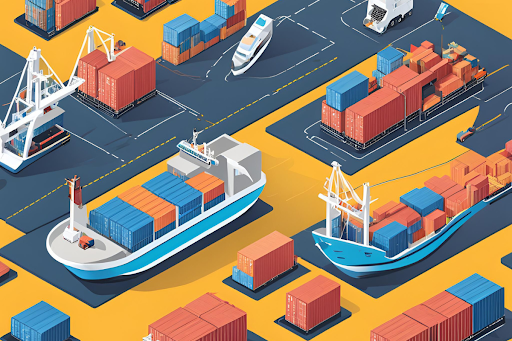
Understanding shipping costs affects your pricing decisions and customer satisfaction. Businesses that manage shipping costs effectively see higher customer satisfaction and fewer abandoned carts.
Here’s what successful brands implement:
- Building basic shipping into product prices for a “free shipping” offer
- Creating minimum order thresholds that benefit both business and customers
- Setting up fixed shipping rates for standard-sized orders
- Providing options in shipping speed to meet different customer needs
Research shows that customers respond well to transparent shipping options. Clear pricing and shipping choices can significantly reduce cart abandonment rates.
Practical Tips to Reduce Shipping Costs
Building strong carrier relationships leads to better rates. Many businesses qualify for significant savings through consistent shipping volumes. Our team helps connect businesses with the right carrier representatives to secure these advantages.
Smart packaging choices make a measurable difference in costs. Our fulfillment experts help clients choose the right box sizes to avoid excess dimensional charges while ensuring products arrive safely.
The right shipping technology makes a measurable difference. Modern fulfillment systems can:
- Show real costs across different carriers
- Find the most cost-effective delivery routes
- Monitor spending to spot saving opportunities
- Create shipping labels and tracking automatically without errors
How to Calculate Shipping Cost Per Item FAQs
How do you calculate shipping costs in accounting?
Calculate shipping costs in accounting by adding transportation charges, packaging costs, insurance, and handling fees. Record the total as a direct expense under shipping or delivery costs in the financial statement. Allocation depends on whether the cost is absorbed by the seller or billed to the customer.
How do you calculate shipping size?
Calculate shipping size by measuring the package’s length, width, and height in inches. Multiply these dimensions to get the cubic inches. For dimensional weight, divide the result by the carrier’s divisor (e.g., 139 for FedEx). Compare dimensional weight to actual weight to determine shipping fees.
How to calculate shipping cost in Excel?
Calculate shipping costs in Excel by inputting variables such as weight, dimensions, shipping zones, and carrier rates into separate columns. Use formulas like =SUM for totals or conditional functions like =IF to adjust costs by shipping criteria. Customize according to carrier pricing tables.
What is included in shipping cost?
Shipping costs include transportation fees, fuel surcharges, packaging materials, insurance, and handling charges. Additional factors like customs duties, taxes, and special delivery services may also be included, depending on the shipping method and destination.
What is the shipping ratio?
The shipping ratio compares shipping costs to the total sales revenue, expressed as a percentage. Calculate it by dividing total shipping expenses by total revenue, then multiplying by 100. It helps businesses evaluate the efficiency of their shipping operations relative to income.
Conclusion
Clear shipping cost calculations help you make better decisions for your growing business. Understanding exactly what you’re paying – and why – puts you in control of your shipping expenses.
IWS stands out in the fulfillment industry through our commitment to superior customer support and transparent pricing. While other providers may offer impersonal service and complex fee structures, we provide real-time, personalized support and clear, upfront costs.
Looking for a fulfillment partner who values transparency and real-time support? IWS specializes in helping health, beauty, and consumer goods brands manage their shipping more effectively. Our proven track record shows we can help reduce your costs while improving delivery accuracy.
Want to learn exactly how much you could save on shipping? Contact us for a clear breakdown of your potential savings with no hidden fees or complicated terms. Our team is ready to provide real-time support for your specific shipping needs.

